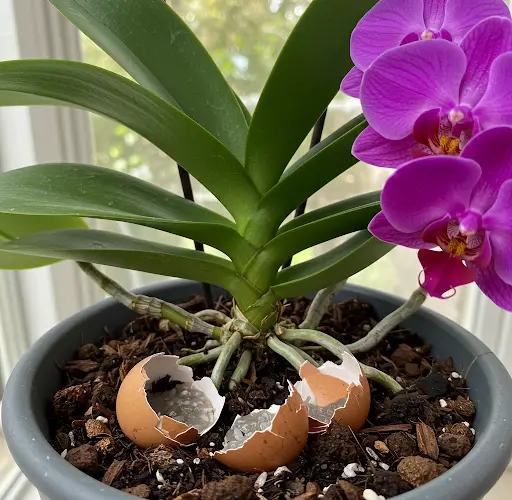Orchids are one of the most beautiful and delicate plants, but they require proper care to thrive. If an orchid becomes wilted, with wrinkled leaves and damaged roots, many people may discard it, thinking it cannot be revived. However, with the right techniques and natural remedies, it is possible to restore a dying orchid and encourage new growth. In this guide, I will show you step-by-step how to rejuvenate a wilted orchid using rice water, eggshells, and cinnamon powder.
Step 1: Assessing the Damage
The first step in reviving a wilted orchid is to assess its condition. If the leaves are wrinkled and wilted, and the roots appear rotten or dry, immediate action is needed.
- Begin by carefully removing the orchid from its pot.
- Inspect the roots to identify which ones are still viable and which ones are damaged.
- Any roots that are black, mushy, or hollow should be cut off using sterilized scissors or pruning shears.
- Remove all damaged leaves and flowers to allow the plant to focus its energy on recovery.
Step 2: Cleaning and Disinfecting the Orchid
Once the damaged parts have been removed, it is essential to clean and disinfect the orchid to prevent infections and fungal growth.
- Rinse the entire plant under running water to wash away any remaining debris.
- Sprinkle cinnamon powder on all the freshly cut wounds, including the roots and leaves. Cinnamon is a natural antifungal agent that helps wounds dry quickly and prevents infections.
- Allow the plant to rest in a cool, shaded area for a few hours to let the cuts dry completely.
Step 3: Preparing Rice Water and Eggshell Solution
Rice water and eggshell solution are excellent natural fertilizers that provide essential nutrients to support the orchid’s recovery.
Preparing Rice Water:
- Take 5 tablespoons of uncooked rice and soak it in 500ml of room temperature water.
- Stir well and let it sit for about 30 minutes.
- The nutrients from the rice, including vitamins A, B, and E, along with amino acids and minerals like phosphorus and potassium, will dissolve into the water.
- Strain the water and set it aside.
-
continued on next page

ADVERTISEMENT

